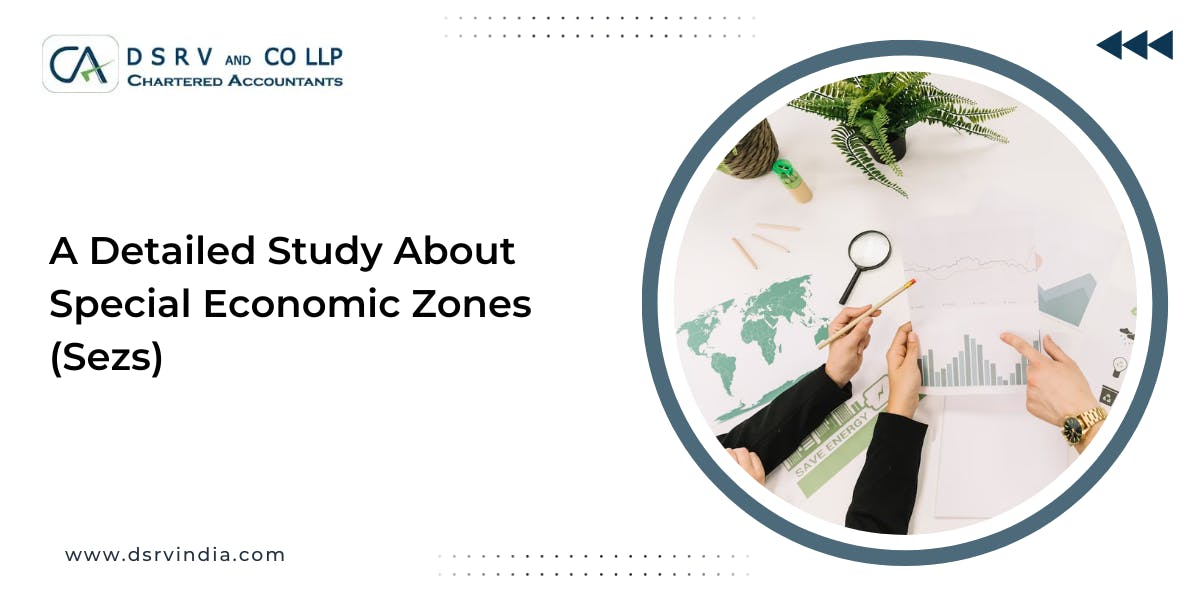A DETAILED STUDY ABOUT SPECIAL ECONOMIC ZONES (SEZs)
Want to know how exports are handled in different zones of the world? We have a complete guide to SEZs overview in businesses in India and overseas.
Want to know how exports are handled in different zones of the world? We have a complete guide to SEZs overview in businesses in India and overseas.

Various Export related zones are known by different names in different countries such as Free Trade Zones (UAE), Industrial Free Zone, Export Processing Zones EPZ (India), Bonded Free Zones, Maquiladoras (Mexico) and Special Economic Zones (China).
India was the first country to establish EPZ, at Kandla, in the Asia Pacific region in 1966. The proposal for setting up the Kandla Free Trade Zone (KAFTZ) was mooted in 1961, with the objective of facilitating the development of the Kutch region, to ensure greater utilization of Kandla Port and to create employment opportunities in the Kandla-Gandhidham area.
With a view to create an environment for achieving rapid growth in exports, The Government of India (GoI) announced a Special Economic Zone in the Export -Import Policy 2000.
Special Economic Zones (SEZs) are specifically delineated duty-free enclaves treated as a foreign territory for the purpose of industrial, service, and trade operations, with exemption from customs duties and a more liberal regime in respect of other levies, foreign investment and other transactions.
As the best tax consultant in Gurgaon, we are here to tell you that the Government of India (GoI) first introduced the concept of SEZ in the Export -Import Policy 2000 with a view to provide an internationally competitive and hassle free environment for exports. Since the performance of EPZs fell far short of expectations due to various reasons, the SEZs were conceived as a much larger and more efficient form and the EPZ scheme was replaced with the “SEZ scheme”
All the existing eight Export Processing Zones located at Kandla and Surat (Gujarat), Cochin (Kerala), Santa Cruz (Maharashtra), Falta (West Bengal), Madras (Tamil Nadu), Visakhapatnam (Andhra Pradesh) and Noida (Uttar Pradesh) were converted into Special Economic Zones.
Further, in order to provide a significant thrust to the policy, the government enacted the Special Economic Zones Act 2005. The Act became operative in February 2006 after the SEZ rules were framed and notified.
Recommended: OVERVIEW OF UNDERSTANDING EXPORT AND IMPORT CONCEPTS UNDER GST [2023]
Previously Special Economic Zones in India were governed by Chapter X-A of the Customs Act, the Special Economic Zones Rules, 2003, and the Special Economic Zones (Customs Procedures) Regulations, 2003 and Chapter 7 and 7A of Foreign Trade Policy. However, w.e.f. 10th February, 2006 the activities relating to Special Economic Zones are guided by the provisions contained in the Special Economic Zones Act, 2005 and the Special Economic Zones Rules, 2006. After the enactment of the Special Economic Zones Act, 2005 Chapter X-A of the Customs Act, the Special Economic Zones Rules, 2003, and the Special Economic Zones (Customs Procedures) Regulations, 2003 are not in operation. Special Economic Zones Act 2005 consists of 8 chapters, 58 sections and 3 schedules. The provisions of this Act shall have effect notwithstanding anything inconsistent therewith contained in any other law for the time being in force or in any instrument having effect by virtue of any law other than this Act. (Section 51)
Section 27 of the SEZ Act provides that “the provisions of the Income-tax Act, 1961 (“the Act”), as in force for the time being, shall apply to, or in relation to, the Developer or entrepreneur for carrying on the authorized operations in a Special Economic Zone or Unit subject to the modifications specified in the Second Schedule (2nd Schedule)”. 2nd Schedule to SEZ Act provides the modifications made under the Income tax Act, 1961 for the purpose of giving some relaxations to the SEZ Unit. The same, inter-alia, includes the introduction of Section 10AA of the Income tax services Act, 1961 w.e.f. financial year 2005-06. We will understand the provisions of Section 10AA of the Income tax Act, 1961 in this article and also the relaxations and exemptions given to SEZ under Income tax laws.
Entities eligible for deduction and Period of deduction under Section 10AA of the Act:
Eligible Entities: An entrepreneur, who begins to manufacture or produce articles or things or provide any services during the period beginning from 1st April, 2005 to 31st March, 2020, shall be eligible to take a deduction under section 10AA with respect to the export turnover of his unit located in SEZ.
Read Also: CHALLENGES OF CROSS-BORDER E-COMMERCE AND SOLUTIONS
1) Deduction is available for a period of maximum 15 years from the year in which the entity has commenced the manufacturing or provision of services.
2) The deduction under Section 10AA of the Act is allowed to the assessee from the total income computed as per the Income tax provisions. Hence, the deduction is allowed to the maximum of total income of such assessee.
3) Units which have already availed the deduction under Section 10A of the Act for a consecutive period of 10 years are not eligible to claim this deduction.
4) Entities engaged in services in relation to Computer Software are also eligible. Further, the profits and gains derived from on site development of computer software (including services for development of software) outside India shall be deemed to be the profits and gains derived from the export of computer software outside India.
Facing GST registration rejection? Discover rejection reasons and resolve GST registration issues. Ensure a smooth application process in 2026.
Dispute Resolution Panel (DRP) in Income Tax: Learn about alternative dispute resolution mechanism for income tax disputes and transfer pricing litigation.
Build a strong transfer pricing defense file. Ensure compliance and avoid tax disputes with crucial transfer pricing documentation and audit readiness.
